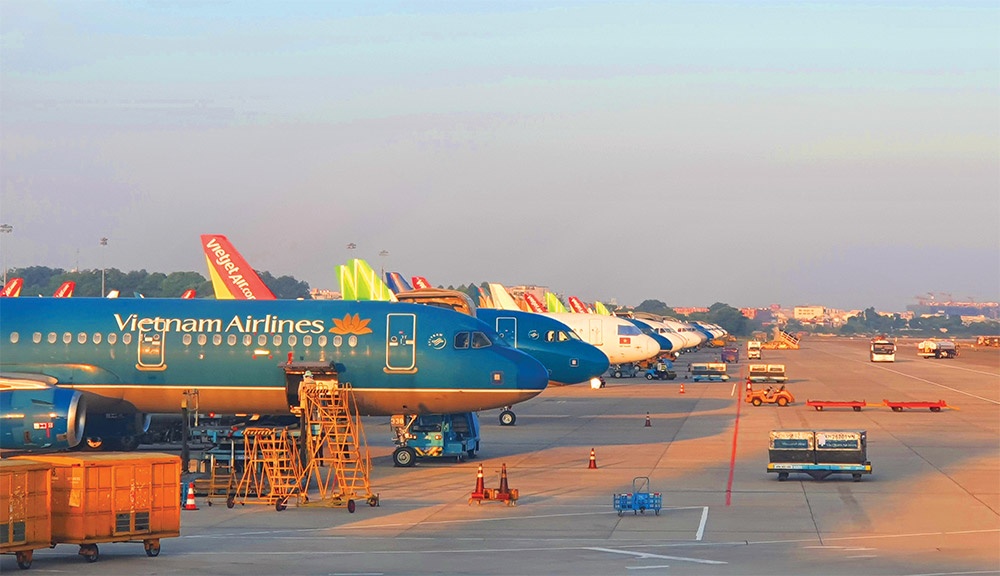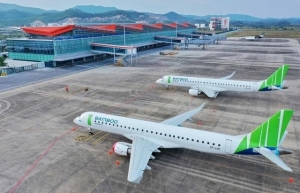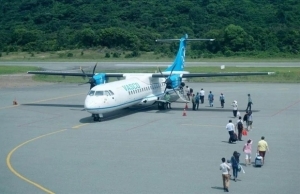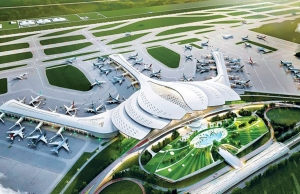Private airport investment solutions still out of reach
According to a source from the Ministry of Transport (MoT), the scheme for mobilising private investment in airport infrastructure has not yet been approved by authorised agencies.
The MoT had planned to submit the scheme for the prime minister’s approval by the second quarter of 2024, aiming to increase attraction of airports and aviation.
 |
| Large capital requirements and lengthy wait for a return on investment hinder aviation development, Photo: Le Toan |
Aviation expert Tuan Nguyen said, “Investors are waiting for clearer and improvements to make next steps. The scheme, when approved, would provide a foundation for calling for private investment in the sector.”
Attracting private investment in aviation has been an issue of concern for years. Khanh Hoa People’s Committee’s proposal to the Ministry of Transport (MoT) last week to develop Van Phong Airport under a public-private partnership (PPP) model, with an estimated investment of nearly $330 million, triggered concerns about its feasibility, and not for the first time.
The proposal suggests state funding for certain components, accounting for just over one-quarter of the total investment. Key infrastructure elements, such as passenger terminals, aircraft parking lots, and transportation systems, would be developed by private investors.
Khanh Hoa already hosts Cam Ranh International Airport, while the neighbouring province of Phu Yen province has Tuy Hoa Airport. Van Phong Airport would compete for the same passenger base as these existing airports.
Worse still, the planned location for the airport is entirely on the water area of Khanh Hoa, which is unprecedented for Vietnam. Internationally, Kansai International Airport in Japan is similarly located on the sea, but it faces challenges like gradual sinking – it has sunk almost 40 feet since it opened in 1994.
The MoT has also voiced concerns, noting that the proposed capacity for Van Phong Airport – 2.5 million passengers annually by 2030, scaling up to 10 million by 2050 – exceeds forecasts. The expected demand is about 1.26 million passengers by 2030 and 2.46 million by 2050.
Phong Tran, a partner at Vilaf specialising in aviation, told VIR, “These factors make the project less attractive to private investors. Local authorities should reconsider the location and timing of the project.”
Van Phong was one of the airports included in Vietnam’s national aviation development plan for 2030, with a vision towards 2050. In a bid to boost investment in the aviation sector, the MoT in April sought approval for policies to implement the national airport system master plan.
According to preliminary estimates by the MoT, the total investment required for airport infrastructure for 2021-2030 is approximately $17.52 billion.
The MoT’s proposal asks the prime minister to allow maximum mobilisation of private capital for PPP projects, including new airports like Phan Thiet and additional terminals at existing airports such as Phu Cat, Con Dao, and Cam Ranh.
Expert Tuan Nguyen noted that for projects like Van Phong and other new airports, feasibility depends on multiple factors, including demand, location, and return on investment. Vietnam currently has 22 airports operated by the state-owned Airports Corporation of Vietnam (ACV), and not all are performing well.
“While these initiatives raise hopes for interested parties, investment opportunities will become clearer once the scheme for mobilising private investment in airport infrastructure is approved by the authorities,” he said.
Bui Doan Ne, vice president of the Vietnam Aviation Business Association, said, “To date, private investment in Vietnam’s aviation sector remains limited because of the large capital requirements, long investment return periods, and relatively low efficiency compared to other sectors, leading both domestic and foreign investors to exercise caution.”
Additionally, regulatory barriers, such as restrictions on foreign ownership in air transport enterprises (capped at 34 per cent, compared to 49 per cent in Thailand, Indonesia, and Cambodia, and 40 per cent in the Philippines), and the high-risk nature of the aviation sector, particularly following the pandemic, further deter investment.
Currently, only three airports in Vietnam have been developed under the PPP model, including Quang Tri, Van Don, and Phan Thiet. Foreign investors have participated in ancillary services like catering and passenger transport since the 1990s, but results have been underwhelming.
Nguyen Sy Dung, former Deputy Chairman of the National Assembly Office, emphasised the need to resolve these investment bottlenecks swiftly. “The state budget and ACV can cover $8.52 billion, but it’s crucial to unlock private investment to upgrade airports and prioritise projects in the master plan,” he said.
 | Airport ventures must align with future demands Vietnam’s ambitions to transform its airport infrastructure will have to deal with lack of interested investors, structural issues, and ongoing overloads. |
 | Con Dao airport to be upgraded to welcome large aircraft The Ministry of Transport (MoT) is planning to upgrade and expand Con Dao airport so it can land bigger planes. |
 | ACV proposes second runway at Long Thanh Internatinal Airport A proposal has been made to build a second runway at Long Thanh Airport and level the area for the T3 terminal to improve operational efficiency. |
What the stars mean:
★ Poor ★ ★ Promising ★★★ Good ★★★★ Very good ★★★★★ Exceptional
Related Contents
Latest News
More News
- Partnerships drive sustainable finance (January 07, 2026 | 09:23)
- FDI inflows reach $38.42 billion in 2025 (January 06, 2026 | 17:55)
- $2.1 billion Nghi Son LNG-fired thermal power plant waits for investor (January 06, 2026 | 17:51)
- GE Vernova powers up Vietnam with first 9HA gas power plant in the country (January 06, 2026 | 16:54)
- Solid finish for manufacturing after volatile year (January 06, 2026 | 08:50)
- Meiko strengthens Vietnam operations with new PCB plants (January 06, 2026 | 08:49)
- Ho Chi Minh City backs $2 billion AI data centre with dedicated task force (January 06, 2026 | 08:43)
- PM sets January deadline for high-speed rail consultant (January 06, 2026 | 08:40)
- New decree spurs on PPP implementation (December 31, 2025 | 19:01)
- Global alliance develops $1 billion AI data centre network in Vietnam (December 30, 2025 | 10:08)

 Tag:
Tag:




















 Mobile Version
Mobile Version